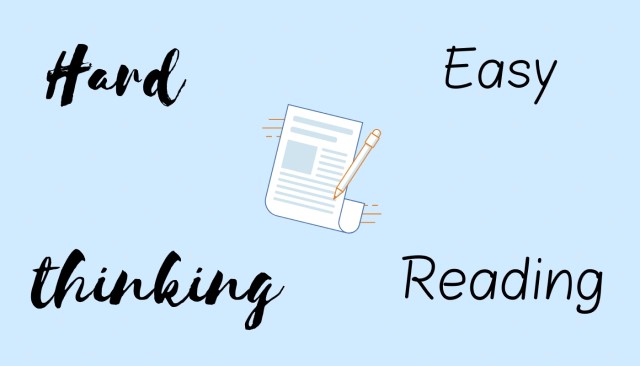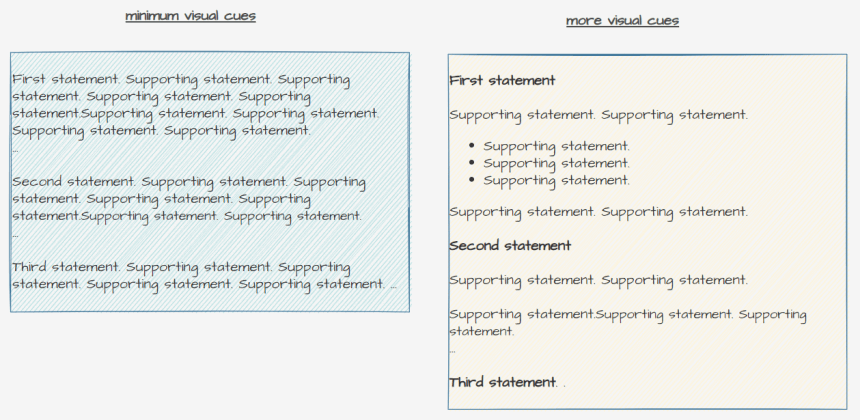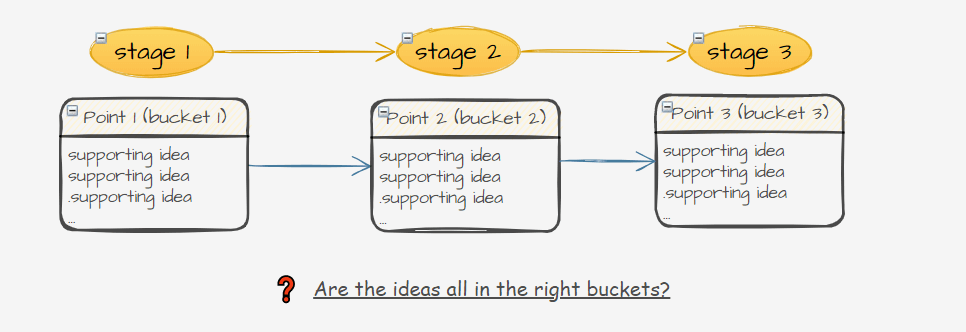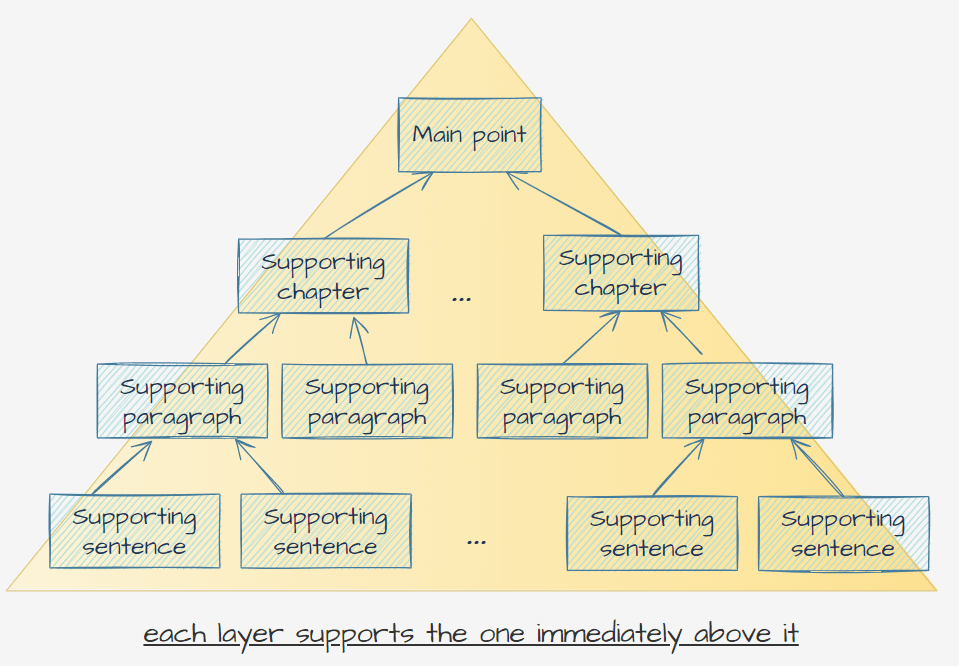How to Write (and rewrite) - Part II

A peculiar challenge of technical communication is to convey complex information without confusing the audience. But what is complex?
Merriam-Webster defines complex as “a group of things that are connected in complicated ways”. In other words, complex is the result of the (difficult to analyze, understand, or explain) ways things relate to each other.
So, if we can figure out how to make the ways things relate to each other easy to understand, would that solve the problem of conveying complex information? I think the answer is “Yes!” In this blog we are going to explore how to use logic to manage the complexity of technical communication.
Pyramid Principle#
The Pyramid Principle by Barbara Minto focuses on the logic in writing and thinking. Its major application is on large and complex text (which sounds like what we have 😏).
On the surface, applying Pyramid Principle consists of:
grouping ideas that support the same main point
summarizing the grouped ideas
constructing the pyramid
Following the Principle, the underlying structure of a text would look like below:
While the methodology is straightforward, to effectively use Pyramid Principle is not as simple. After all, logic implies hard thinking.
Visual Hierarchy#
If the author has done his/her part of hard thinking, would that guarantee the result is an easy read for the audience? Only if we also provide visual cues to help navigate the complexity.
Visual hierarchy is a pattern in the visual field and an important principle in interaction design. As the Pyramid structure already suggests a visual image, it’s no surprise that visual hierarchy could be of use in technical communication as well.
Let’s see how we can use different styles to build visual hierarchies based on the pyramid structure.

💭 A word of caution: How to decide the size of a chunk (content block) depends on the nature of the content. The goal is to help navigation, not to disrupt the reading flow.
But are these all there to know about managing the complexity of technical communication? Revealing the underlying structure not only makes the text easy to follow, it can also expose potential weakness in the text.
Devise your buckets#
In the diagram above we created a visual hierarchy that reflects the underlying pyramid structure of a text. Would it stand up to scrutiny? When reading closely, does it make logical sense? What if some main points overlap, while some main points are missing?
To answer these questions, we take two steps:
Map out our goal and the main points (buckets):
Back to the user journey analogy, have we established all the main points necessary to cover the whole journey? Does each main point occupy a unique position on the journey?
Evaluate the ideas in each bucket.

An ingredient of the Pyramid Principle, the MECE principle (Mutually Exclusive, Collectively Exhaustive) provides guidance on how to validate the buckets and the ideas within.
Once you have practiced this method for a while, you are likely to find that a more important outcome is that you can identify gaps in the content, and the opportunity to improve the content (substance) without damaging the visual clarity (form).
Let’s practice#
Agile Manifesto has four core values and twelve Principles. We know that principles are based on values. How do the Agile principles support the values? Can we group the principles (ideas) into the values (buckets)?
My experiment#
Below is my experiment (the number preceding each principle indicates its position on the Principle page).
- Value 1: Individuals and interactions over processes and tools
This value seems to be about team. So I put the team-related principles here.
(5) Build projects around motivated individuals. Give them the environment and support they need, and trust them to get the job done.
(6) The most efficient and effective method of conveying information to and within a development team is face-to-face conversation.
(11) The best architectures, requirements, and designs emerge from self-organizing teams.
(12) At regular intervals, the team reflects on how to become more effective, then tunes and adjusts its behavior accordingly.
- Value 2: Working software over comprehensive documentation
This value seems to be about deliverables.
(1) Our highest priority is to satisfy the customer through early and continuous delivery of valuable software.
(3) Deliver working software frequently, from a couple of weeks to a couple of months, with a preference to the shorter timescale.
(7) Working software is the primary measure of progress.
(10) Simplicity--the art of maximizing the amount of work not done--is essential.
❓ Is the principle 10 in the right bucket?
- Value 3: Customer collaboration over contract negotiation
This value seems to be about being customer-centric.
(4) Business people and developers must work together daily throughout the project.
(9) Continuous attention to technical excellence and good design enhances agility.
❓ Where does the principle 9 belong? Is agility a value in itself?
- Value 4: Responding to change over following a plan
This value seems relate to change management.
(2) Welcome changing requirements, even late in development. Agile processes harness change for the customer's competitive advantage.
(8) Agile processes promote sustainable development. The sponsors, developers, and users should be able to maintain a constant pace indefinitely.
❓ Which value does principle 8 reflect?
Now it’s your turn#
Do you think there is a different way to structure the principles, or even refine the values?
Recap#
To manage the complexity of technical communication, try the techniques below:
Use the McKinsey Pyramid Principle to expose the underlying structure of a complex text
Create visual hierarchies to help the audience navigate the complex
Devise buckets to support the user journey
